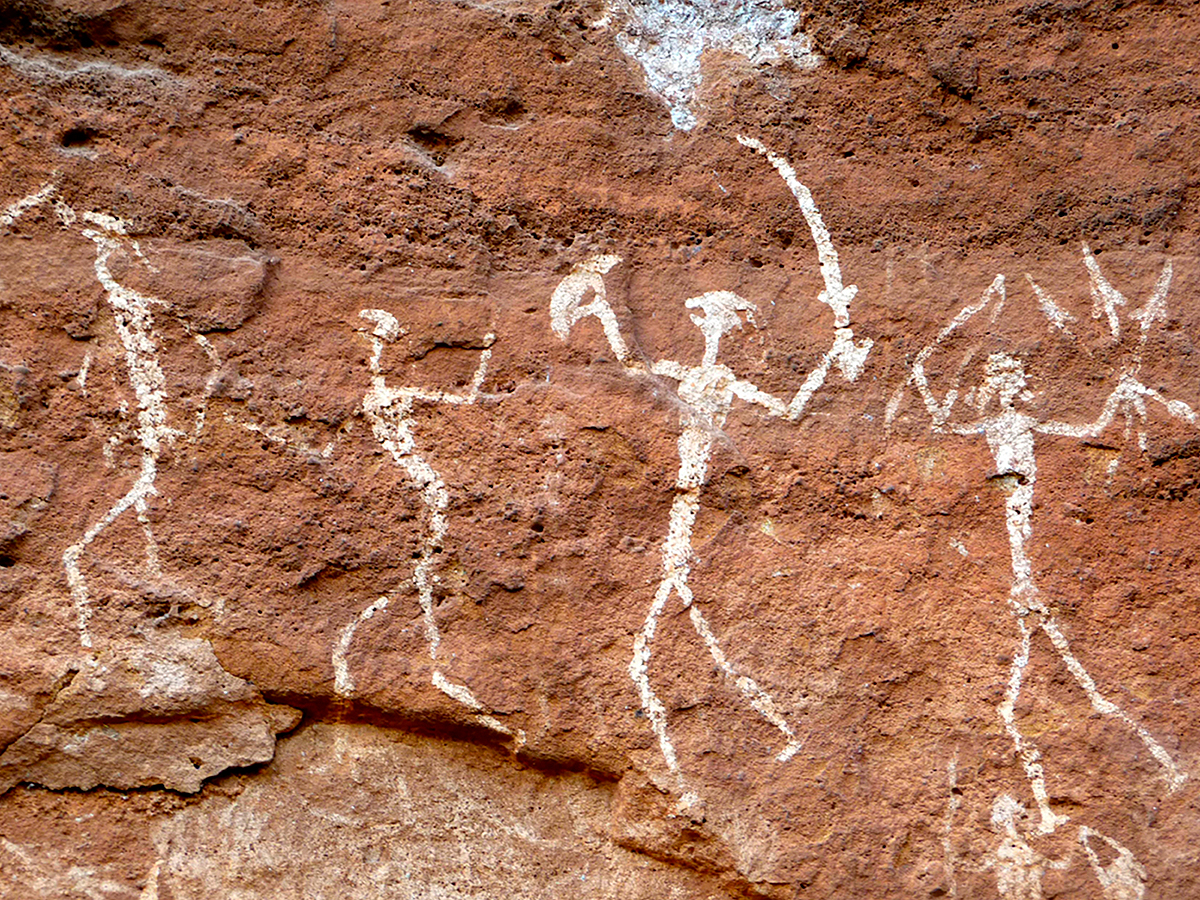


Then follow Dr. Meenakshi Dubey Pathak of the Rock Art Network into central India where she describes the work she has been carrying out on the rock art in the State of Chhattisgarh. She reveals that although many images appear to remain mysterious to us, Chhattisgarh is one of the few places in the world where the perseverance of traditions allows us to understand the meaning, or some of the meanings, of diverse motifs.
This region of India disproves the long-held assumption that rock art was a static cultural phenomenon, frozen in time. During her work in Central India, she realized that traditional ceremonies along with stories - followed since time immemorial - were still taking place in various painted shelters at auspicious times of the year. The Chhattisgarh and Madhya Pradesh examples (and no doubt elsewhere) thus give an unexpected new dimension to Indian rock art. In most of central India, rock art sites have been reused for modern religious purposes and many have been transformed into Hindu sanctuaries, sometimes defacing or completely destroying the ancient rock art motifs in the process.Working in Chhattisgarh with Dr. Jean Clottes since 2014, together they visited and documented sixty-three painted shelters, most of them in deep jungles and forests which cover over 44% of the surface of the State. They were guided and accompanied to the sites by local Forest officers and by tribal men from the nearest villages. There were traces of modern sanctuaries and ceremonies in a number of painted sites, as well as modest deposits that seemed to be in direct relation to the paintings. Indeed, at several of the sites, the guides themselves carried out rituals before documentation could begin.

This legacy is also being preserved through education; Dr Meenakshi Dubey Pathak has been working with local tribes in order to understand their art and culture, and from this understanding she now creates art inspired by the rock art; on canvas, tree bark, stone, glass, and fabric.
This has led to rock art workshops aimed at educating the young of this cultural legacy.
→ Discover more about the Rock Art of India
→ Introduction to the Rock Art of India
→ The Rock Art of Central India
→ The Rock Art Paintings of Pachmarhi Hills
→ India Rock Art Gallery
→ Rock Art of Chhattisgarh State
→ Preservation & Education of Rock Art in India
→ Contemporary Art
→ Dr V. S. Wakankar
→ Meenakshi Dubey-Pathak
→ Headhunters of Pachmarhi Rock Art
→ Rock Art and Tribal Art of Madhya Pradesh
→ Ritually vandalized rock art site in central India
→ Handprints in the Rock Art and Tribal Art of India
→ UNESCO World Heritage Rock Art Site of Bhimbetka
→ Painted Shelters of Dharkundi in India
→ Nishangarh Rock Art Site of India
→ Bradshaw Foundation
→ Rock Art Network





















